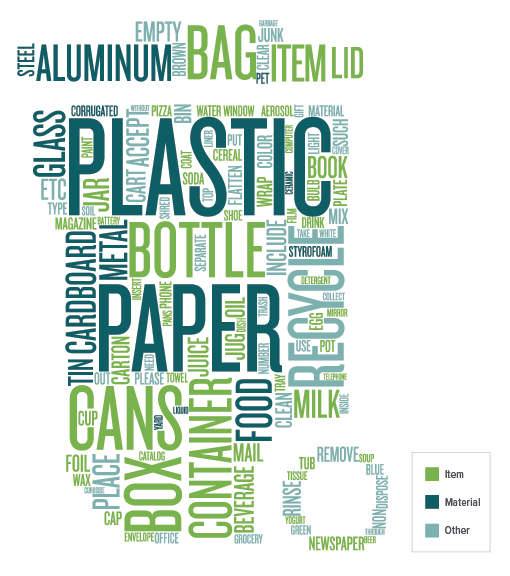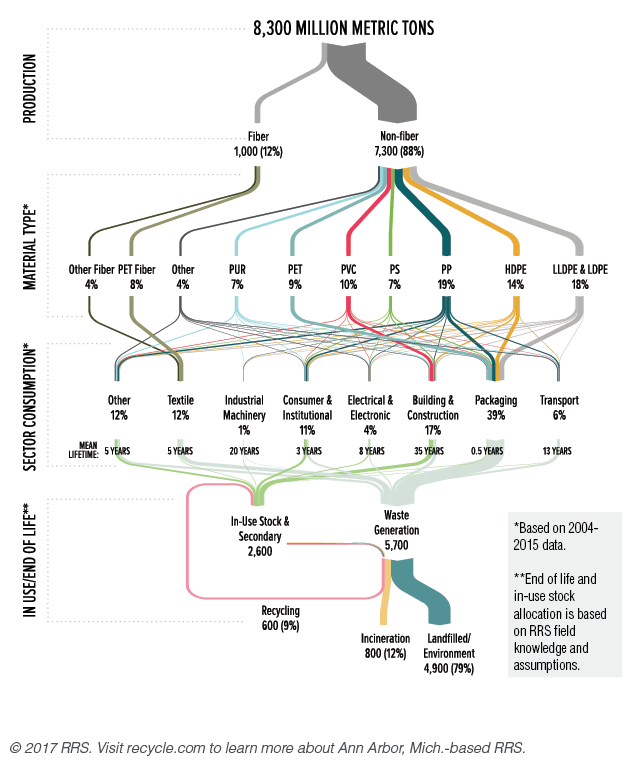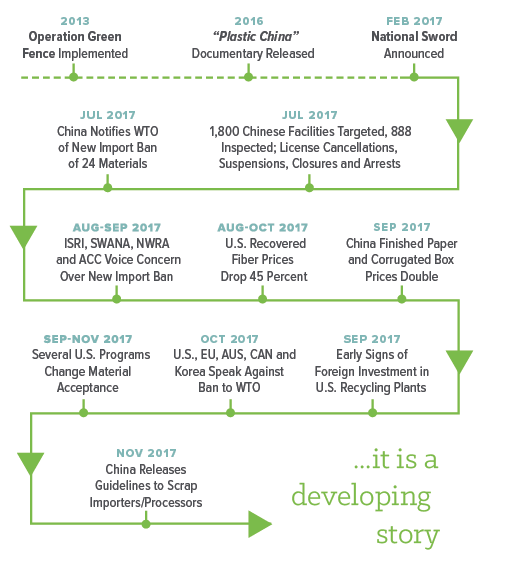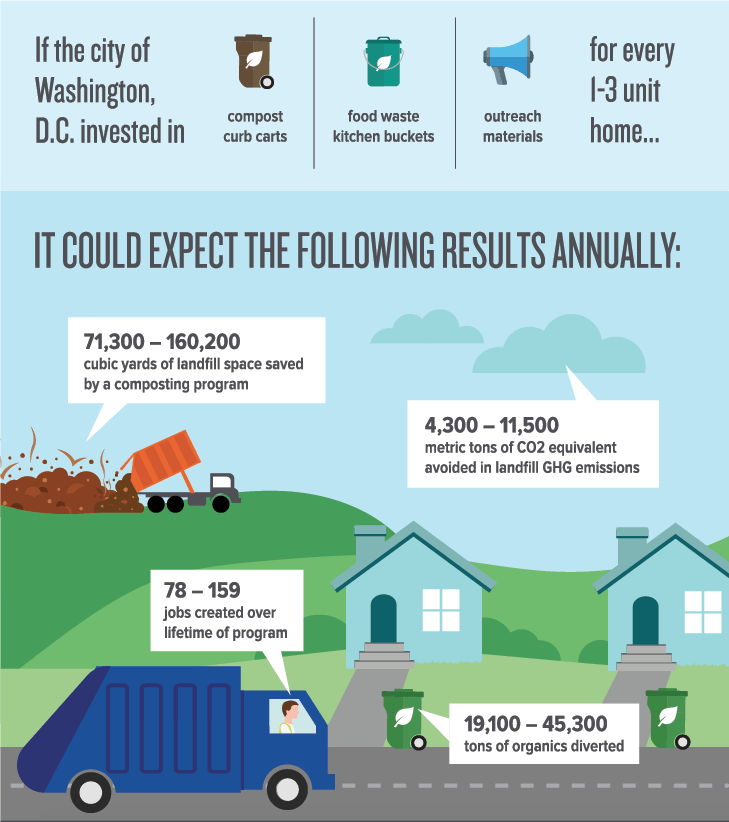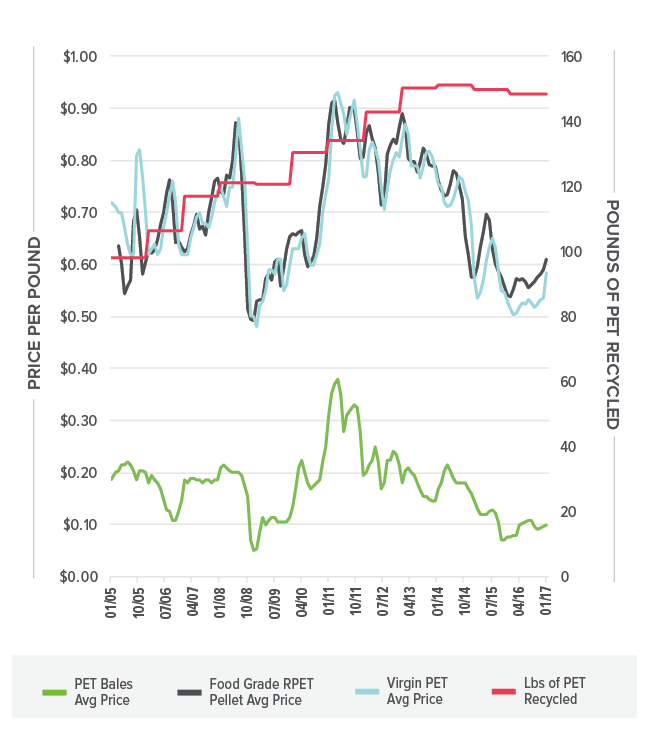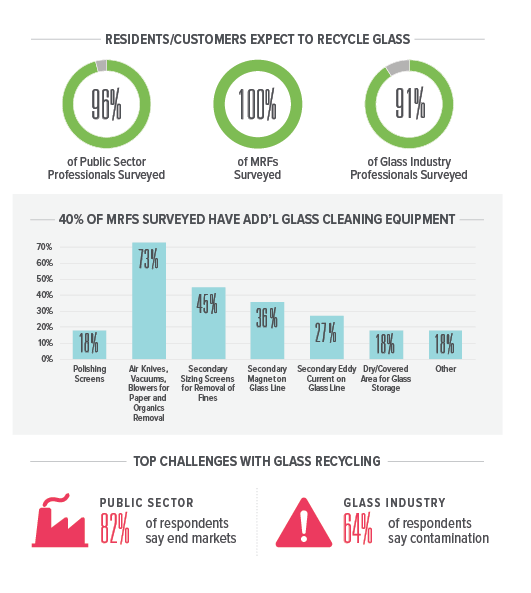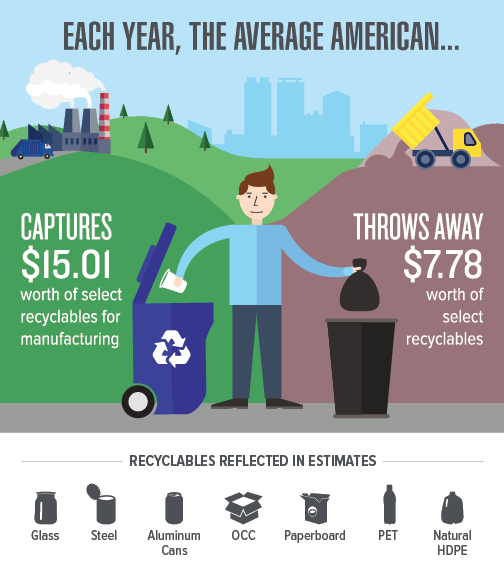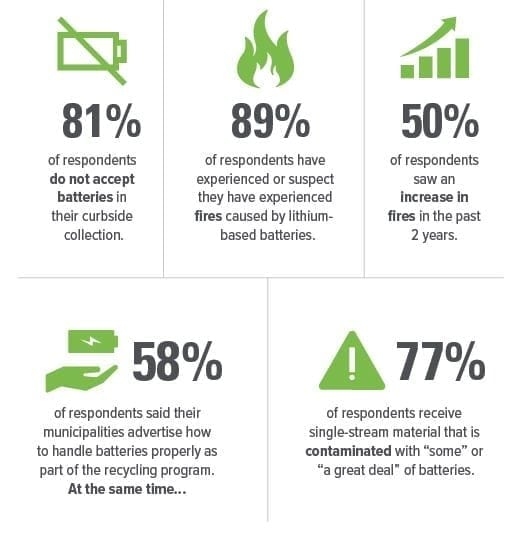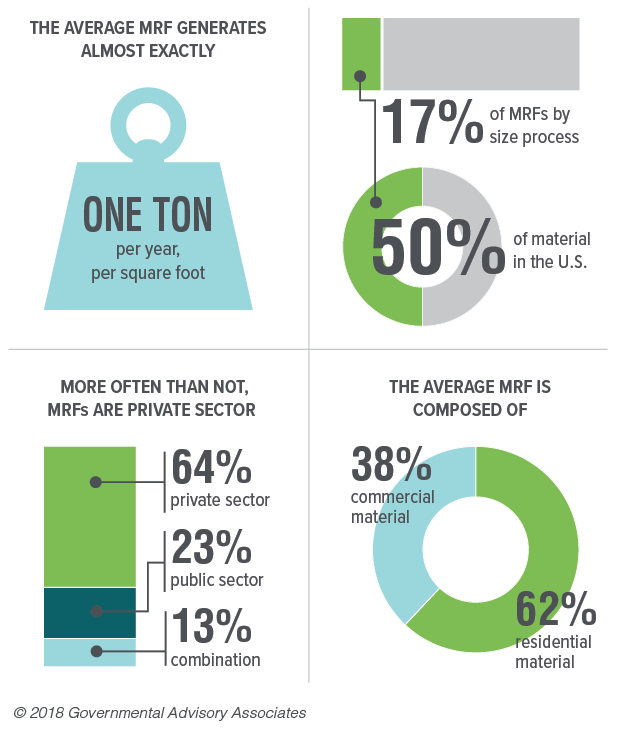RRS compiled a sampling of nationwide data from Governmental Advisory Associates and U.S. EPA sources to show current average materials recovery facility (MRF) efficiency rates and community recycling rates based on MRF construction year.
Efficiency rates show the percentage of materials, by weight, that enter the MRF and are not discarded as residue.
Newer MRFs open the door for single-stream programs in which people throw all recyclables in one bin – this improves participation and boosts tonnages but affects sorting efficiency, resulting in more residuals.
The tradeoff is positive overall as long as the increase in recycling outweighs the decrease in efficiency. Developments in MRF technology to reflect the mix of materials in the stream can help to capture more, and education is essential to minimize contamination.
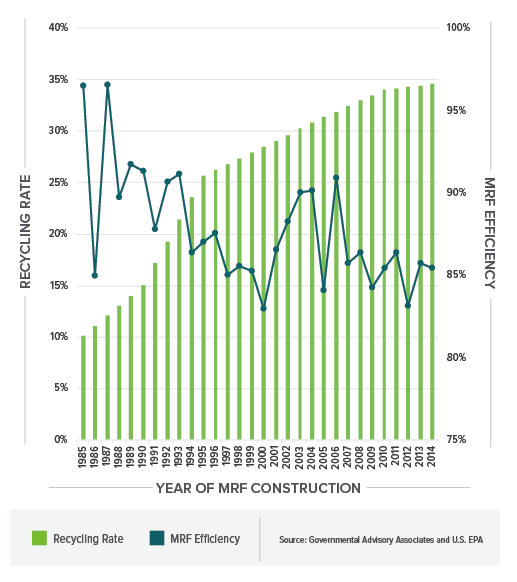
Data Corner is compiled monthly by recycling consultancy RRS.
This article originally appeared in the September 2017 issue of Resource Recycling. Subscribe today for access to all print content.


